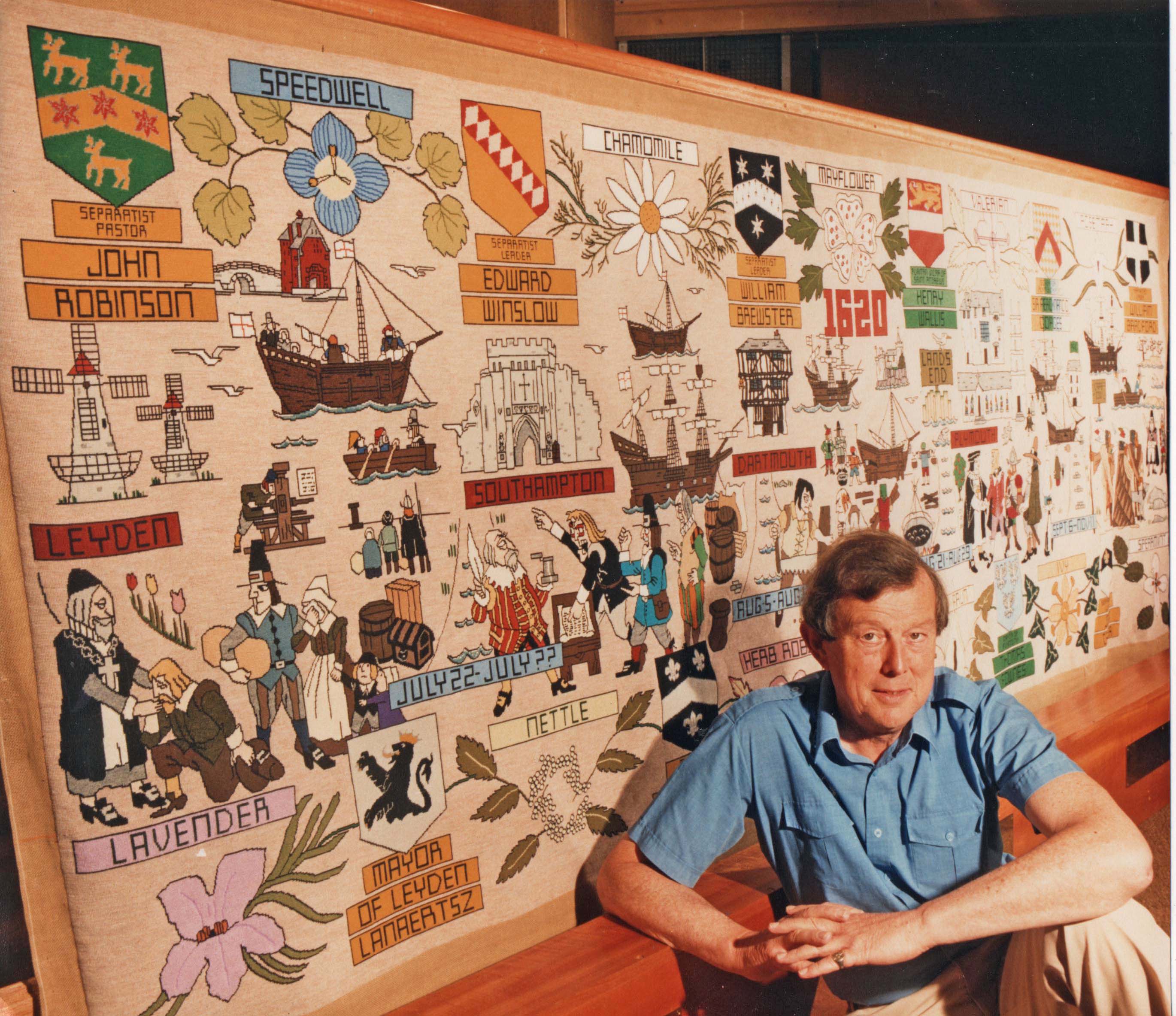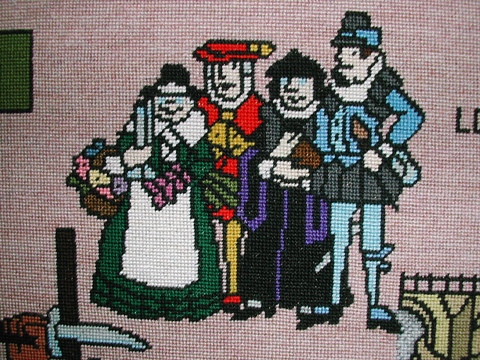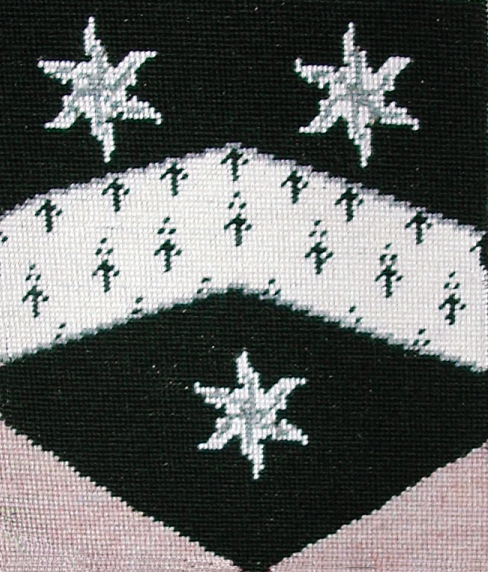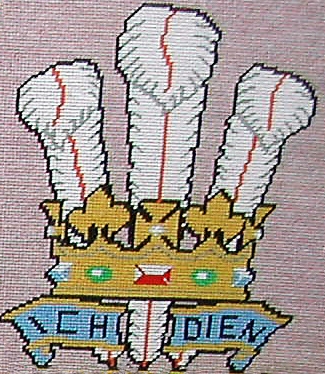
|
| Tom Mor 1976 |
West Country professional artist Tom Mor conceived, designed and gave away his 28ft
by 2ft Plymouth Tapestry to the Parish Church of St Andrew in Plymouth for permanent display in the architectural treasure they own, the 1490 Prysten House. The subject of the tapestry was the appointment of the town’s first schoolmaster, Thomas Brooke in 1561.
The project was a labour of love to raise funds from visitor fees to help in the maintenance
of the House. The team of 20 Tapissiers
who did the expert, beautiful stitchery, also gave their time entirely free. This continued from the start in 1976
until the end of the second Project, the massive 267ft by 4ft New World Tapestry in March
2000. Research and preparation of the New World Tapestry’s 24 panels,
each measuring 11ft by 4ft, began whilst the Plymouth Tapestry was still being stitched. Tom Mor was soon joined by another
Tom – Tom Maddock, a retired friend from Ivybridge. Over the months they travelled hundreds of miles
together searching out the 264 people who would eventually be named on the Tapestry. The next volunteer was Heraldic expert
Paul Presswell of Buckfastleigh and the hunt intensified to identify all the Coats
of Arms of the people, colleges and companies involved. The result has been the creation alongside the Tapestry of a unique
library of files on each person and a collection of reference books of great use to researchers and scholars.
The New World Tapestry story deals with England’s colonisation attempts in America,
Bermuda, Guiana and Newfoundland between 1583 and 1642 when the Civil War broke out. It is “History Without Tears”,
for there are many touches of humour on it, especially to interest the younger generation.

|
| Paul Presswell and Tom Maddock 1976 |

Two hundred and sixty four armorial shields run along the top and bottom Tapestry borders throughout its length, alternating
with illustrations of the same number of the flowers of the herbs, medicinal plants, trees and shrubs. The latter are shown
because the colonists took ointments and cure-alls with them on their voyages and plant hunters returned with such things
as the potato and tobacco.
|
 |
|
|
|
 |

|
| Freda Simpson - Herb Researcher 1987 |
All the flowers and florets depicted were drawn from
Nature by Tom Mor who studied them under a watchmaker’s glass. He was helped from the very early days by yet another
friend Freda Simpson of Plymouth. Freda was passionately interested in herbs and old herbal remedies. It
was she who identified, picked and gave Tom over 230 actual flower specimens in the years that he, his wife and family lived
in Plymouth. Later they moved to Cambridge where Tom was able to complete the set of 264 drawings with the help of Clive
King and Caroline Lawes of the University Botanic Garden; Lady Jane Renfrew of Lucy Cavendish College and Alison Davies, Monica Stokes
and Edna Norman. Tom could not have done all the Tapestry
research without the help of his friends and, of course, seen his canvasses brought to vibrant, colourful life without the
expertise of the dedicated Tapissiers. When the Very First Stitch was made in the New World tapestry in 1980, the team working
in the Prysten House numbered 20. By the time that the Very Last Stitch was made in March 2000, the number of Tapissiers, men and ladies had risen
to 256 with the addition of another 8 centres. In Devon there was a second in Plymouth at HMS Drake (the Royal Navy’s
panel), Ivybridge, Chillington, Exeter, Bideford, Totnes and Tiverton Castle. Dorset’s one Tapestry centre was in the Guildhall at Lyme Regis.

FIRST OBLIQUE GOBELIN STITCH was
made on 26th September 1980 in the 1490 Prysten House in Plymouth by U.S.
Ambassador the Hon. Kingman Brewster. His Excellency made it on the Coat of Arms of his direct ancestor, the famous Pilgrim Fathers’ leader William Brewster who appears on the 1620 Mayflower panel.

LAST OBLIQUE GOBELIN STITCH was
made by H.R.H. Prince Charles on March 3rd 2000 in the Orchard Room of his home at Highgrove House in Gloucestershire.
Most fittingly, with his interest in history and a great gardener himself, His Royal Highness put his golden wool stitch
in the date of the 1642 Great Gardeners and Herbalists’ panel.
|
 |
|
|
|

